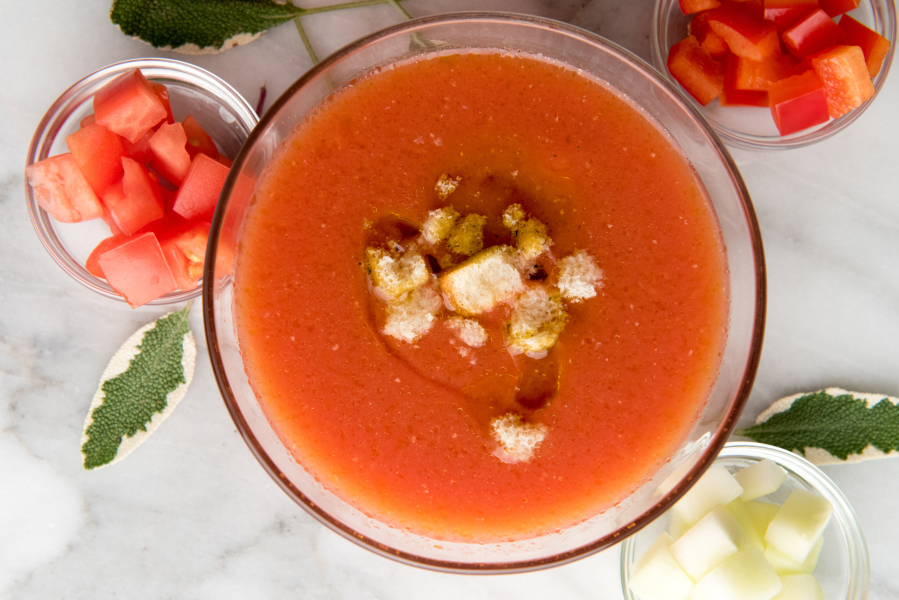MADRID — In Spain, there are as many gazpachos as there are Spaniards. Every family here has its own recipe with its own little changes.
I much prefer gazpacho made in a food mill, as that allows for some texture, and that is the way it was made when I was young. Nowadays it is done in a blender, but it does not turn out exactly the same. Machine-blended gazpacho with bread and olive oil is more like a salmorejo, but without that soup’s creamy smoothness.
Although tomatoes and peppers arrived on our tables by the 16th century, red gazpachos that used them did not become popular until the 19th century. Big landowner families that had a lot of country employees generally had a “gazpachero,” a man who would prepare gazpacho for the peasants working on their estates. These men made gazpacho by pounding the vegetable mixture in an olive wood bowl, as in a mortar. They were very patient, as it took quite some time.
The main difference between gazpacho and some of its variations lies in texture and emulsion. In a classic Spanish gazpacho, olive oil is simply stirred in at the end; in salmorejo, porra and other soups, the olive oil is emulsified, resulting in a brighter orange color and a smooth, creamy texture. Pipirrana’s components are the same as those in gazpacho, but they are diced; with the addition of a little water or ice cubes, it turns into a liquid salad, and the bread is served separately, for dipping.



